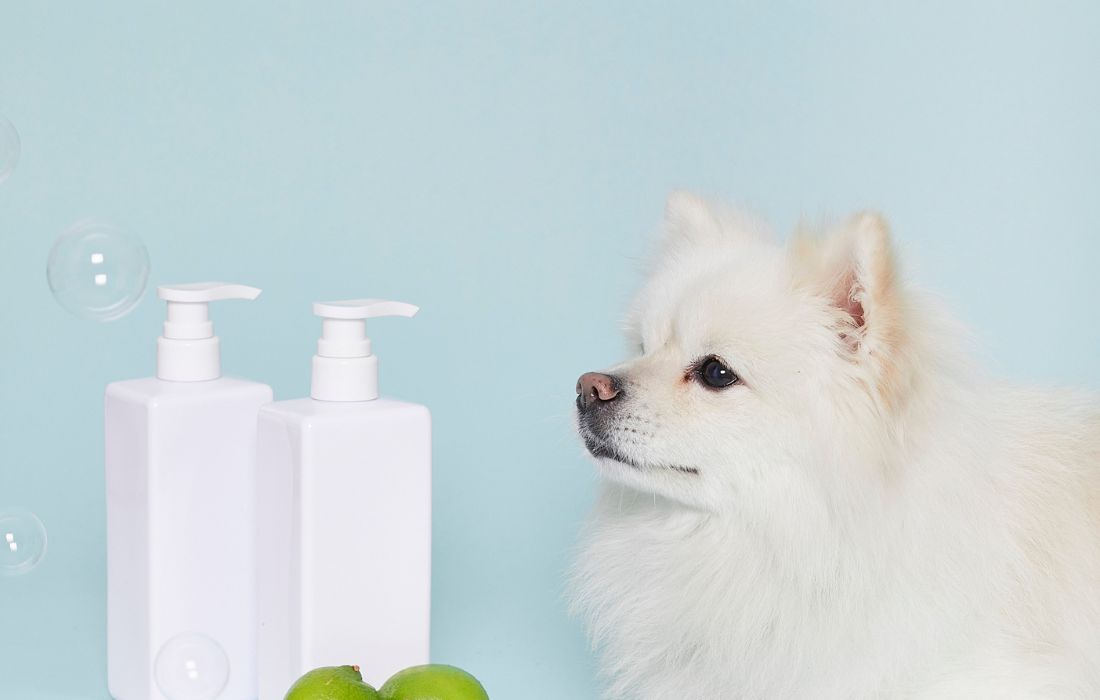Known for it’s intelligence, loyalty, and protective instincts, the Blue Doberman isn’t just another variation of the Doberman Pinscher, it’s an incredible companion that when appropriately trained and socialized can become a wonderful companion. this striking dog stands out with its shining steel-gray coat and captivating presence. Defined by a recessive dilution gene affecting black pigmentation, their unique coloration makes them both rare and highly sought after.
In this post, I’ll walk you through everything you need to know about the Blue Doberman, from its origins and characteristics to specialized care tips, helping you decide if this exceptional breed is the right fit for you.
What Makes a Blue Doberman Unique?
The Blue Doberman captivates attention not only with its striking appearance but also with the fascinating genetics behind its coat color. While many recognize the Doberman Pinscher for its loyalty, intelligence, and muscular frame, the “blue” variant has qualities that make it truly one-of-a-kind. This isn’t a separate breed, but rather a unique and rare color variation stemming from genetic factors. Let’s break down what sets these dogs apart.
Genetics Behind the Blue Coat
So, what exactly causes that iconic steel-gray coat in a Blue Doberman? It all boils down to the dilution gene, scientifically known as the D-locus gene. This recessive gene lightens the standard black or red Doberman coat, giving the dog its distinctive bluish hue. To inherit this coat color, a pup must receive a copy of the dilution gene from both parents, which is why Blue Dobermans aren’t as common.
To be clear, the Blue Doberman isn’t a different breed; it’s simply a mesmerizing color variation of the classic Doberman Pinscher. You might recognize other diluted colors in dogs, like the “blue” seen in Weimaraners or Blue Heelers, but in Dobermans, it’s especially rare and sought after.
Physical Characteristics
Beyond their genetics, Blue Dobermans are visually stunning. They embody the strong, athletic build typical of Dobermans, with a lean yet powerful frame that exudes elegance. Their coats are short and smooth, but what sets them apart is the unique bluish-silver sheen that seems to glow under sunlight. This coat color is often complemented by lighter rust markings around their chest, muzzle, legs, and above their eyes, giving them a clear difference.
Blue Dobermans differ from regular Dobermans in that they are sharp and intelligent, with almond-shaped eyes that are usually shades of amber to light brown. The combination of their piercing gaze and sleek, muscular body makes them unmistakable. Like all Dobermans, they stand tall—between 24 to 28 inches at the shoulder for males and slightly shorter for females. Their well-defined posture and majestic appearance immediately demand attention, whether they’re in motion or standing still.
In essence, the Blue Doberman combines everything people love about the traditional Doberman, a loyal companion and an imposing guardian—but wraps it all in a rare and ethereal package. Whether it’s their regal build, unique pigmentation, or sharp features, their standout charm is hard to ignore.
Temperament and Behavior


When it comes to understanding the temperament and behavior of a Blue Doberman, you’re diving into what makes this breed truly special. These dogs aren’t just about their striking appearance—they bring intelligence, loyalty, and a deep connection to their families to the table. Let’s look into how they interact with loved ones and what it takes to help them thrive through proper training and socialization.
Family Dynamics
Blue Dobermans form incredibly close bonds with their owners. They’re not the type of dog to be indifferent, they genuinely thrive on companionship, making them deeply loyal and loving household members. As natural protectors, they have a built-in instinct to watch over their loved ones. If you’ve got children, this trait can be comforting since they often act like a vigilant older sibling, protective but not overly aggressive.
Their protective instincts extend beyond just physical safety. They are also emotionally in tune with their owners. Ever had a rough day and felt like your dog just knew? That’s the kind of connection you can expect.
While these dogs are great with respectful kids, supervision is key. It’s essential to teach children how to interact gently and respectfully with a dog of this breed. Socializing them with other pets? That’s usually seamless when started early, but keep in mind their tendency to be cautious around new animals or people until they feel comfortable.
Training and Socialization
Training a Blue Doberman is both a responsibility and a joy. These dogs are highly intelligent, which makes them quick learners, but they’re also strong-willed, meaning consistency and a firm yet kind approach are your best allies.
A few key tips for successful training:
- Start Early: Begin training and socialization as soon as you bring your puppy home. Exposing them to different sounds, sights, and environments early on dramatically helps them develop into a calm, confident adult.
- Positive Reinforcement: Blue Dobermans respond wonderfully to rewards and praise. Use treats, toys, or excited affirmations like “Good job!” whenever they obey commands or exhibit good behavior.
- Set Clear Boundaries: These dogs thrive in a structured environment. Clearly communicate what’s allowed and what isn’t, and stick to it.
- Enroll in a Class: Obedience classes are a fantastic way to help them learn while socializing with other dogs and humans in a safe, controlled setting.
Socialization is just as important as training. A well-socialized Blue Doberman will be friendly yet discerning, knowing when to relax and when to be cautious. Whether it’s introducing them to new people, environments, or situations, gradual exposure is key. Remember, the goal is to create a balanced Blue Doberman who can handle the real world without becoming overly protective or anxious. With proper guidance, these dogs turn into confident, loyal companions who fit seamlessly into your life.
Health Considerations


When considering owning a Blue Doberman, understanding their health and wellness is essential. These dogs carry the same risks as standard Dobermans but also have unique conditions specific to their coloration. Knowing what to watch for can make a significant difference in ensuring your Blue Doberman enjoys a long and healthy life.
Blue Doberman Syndrome
Blue Doberman Syndrome, also known as Color Dilution Alopecia (CDA), is a genetic condition primarily seen in dogs with a diluted coat color like blues and fawns. While not all Blue Dobermans develop this condition, it’s important to know what it entails.
What is Blue Doberman Syndrome?
This condition is caused by irregularities in the hair shaft structure due to the dilution gene. These irregularities make the hair more prone to breakage and loss. Symptoms often appear between 6 months and 3 years of age, with progressive hair thinning and patchy alopecia (bald spots). In severe cases, the hair loss can come with peeling skin or even secondary infections due to scratching.
Managing This Condition
Though there’s no cure for Color Dilution Alopecia, it is manageable with consistent care:
- Regular Grooming: Use gentle grooming tools and medicated shampoos to soothe irritated skin. Products like those recommended by veterinarians in cases of CDA can help; for more details, check out VCA Hospitals’ guide to CDA management.
- Stay Hydrated & Nourished: A diet rich in omega-3 and omega-6 fatty acids supports skin hydration and coat health.
- Avoid Harsh Products: Skip abrasive grooming products that can worsen skin irritation. Mild shampoos are a must.
- Veterinary Treatments: Your vet might suggest topical treatments to ease symptoms or antibiotics for infections.
Being proactive with care ensures your dog’s skin stays healthy, even if they face hair loss. Catching symptoms early and consulting a vet can prevent complications later.
General Doberman Health Concerns
All Dobermans, including Blue Dobermans, are predisposed to certain health conditions. By being aware of these, you can work closely with your veterinarian to minimize risks.
Dilated Cardiomyopathy (DCM)
Dilated Cardiomyopathy is a serious condition that affects the heart muscles, leading to enlarged heart chambers and reduced pumping efficiency. This condition is more common in Dobermans than most breeds, and it often progresses without noticeable symptoms until the advanced stages.
Signs to Watch For:
- Lethargy and intolerance to exercise
- Coughing or difficulty breathing
- Fainting spells
Prevention Tips:
- Regular check-ups with your vet, particularly heart tests such as echocardiograms.
- Omega-3 supplements for heart health, as advised in this PetMD guide.
Hip Dysplasia
Hip Dysplasia occurs when the hip joint doesn’t fit properly into its socket, causing arthritis or pain over time. This hereditary condition is often aggravated by rapid weight gain or over-exercise as a puppy.
How to Prevent It:
- Maintain a healthy weight to reduce joint strain.
- Provide moderate, low-impact exercises such as swimming or walking.
- Feeding large-breed puppy food can control growth rate and reduce strain on joints.
Von Willebrand’s Disease
Von Willebrand’s Disease is a genetic condition affecting blood clotting. Dogs with this condition may experience prolonged bleeding after an injury or surgery.
What You Can Do:
- Your vet can perform a specific test to determine if your dog has this condition.
- Schedule surgeries or procedures with a vet who’s experienced in managing dogs with blood-clotting issues.
- Dogs diagnosed with this condition should not be bred.
The Doberman Health Concerns page explains breeding considerations and offers helpful prevention tips.
Routine Veterinary Care
Regular wellness checks are vital for Dobermans. Here’s how you can stay ahead:
- Bi-annual vet visits to monitor heart and hip health.
- Blood tests for early signs of illness.
- Vaccinations and flea/tick preventatives.
By staying proactive, you ensure your Blue Doberman remains a happy, energetic part of your family for years to come. Their unique health needs require a little extra attention, but it’s a rewarding part of having such a remarkable companion.
Caring for a Blue Doberman


Blue Dobermans have unique needs that stem from their distinctive genetics and active nature. Providing proper care ensures they thrive as happy, healthy companions. Whether it’s selecting the right food, keeping up with grooming, or ensuring plenty of mental and physical exercise, learning how to care for your Blue Doberman is key to a fulfilling relationship.
Proper Diet and Nutrition
Ensuring your Blue Doberman gets the right nutrition is vital for their energy levels, coat health, and overall well-being. These dogs are active and require a carefully balanced diet.
- High-Quality Protein: Look for foods rich in lean protein sources like chicken, turkey, or fish. Protein supports muscle maintenance and development, which is crucial for an athletic breed like the Blue Doberman.
- Healthy Fats: Incorporate omega-3 and omega-6 fatty acids. These have added benefits for coat health, which helps minimize issues that Blue Dobermans may face with skin and hair thinning. Salmon oil or flaxseed can be a great addition.
- Complex Carbohydrates: Energy comes from the right carbs. Include brown rice, sweet potatoes, or oats in their diet instead of fillers like corn or wheat.
- Supplements if Needed: A veterinarian might recommend additional nutrients such as vitamin E or zinc for boosting skin health.
Exercise and Mental Stimulation
Blue Dobermans are athletic and highly intelligent—it’s in their DNA. Without adequate exercise or mental engagement, they can become restless or even destructive. Keeping them physically and mentally stimulated is essential for a balanced dog.
- Daily Walks and Runs: At least 30–60 minutes of intense physical activity is a must.
- Agility Training: Activities like navigating obstacle courses not only challenge their athleticism but also keep their minds sharp.
- Interactive Play: Games like fetch or tug-of-war are fun ways to burn off energy while strengthening your bond.
- Puzzle Toys: Use mental stimulations like treat dispensers or interactive toys that challenge their problem-solving skills.
Grooming Needs
The blue coat of a Blue Doberman is a standout feature, but it also requires particular care due to the possibility of skin sensitivities like color dilution alopecia (CDA).
- Brush Weekly: Use a soft-bristle brush to remove loose hairs and stimulate natural oils in their coat. Over-brushing can irritate their sensitive skin, so less is more.
- Gentle Bathing: Bathe them as needed using non-irritating shampoos, such as oatmeal-based formulas, to maintain coat health and soothe their skin. Avoid harsh chemicals or frequent washing, as these can dry out their coat.
- Ears, Teeth, and Nails: Check ears weekly for dirt or odor, brush teeth regularly to avoid tartar buildup, and ensure their nails are clipped monthly. Neglected nails can lead to discomfort or gait alterations.
Taking extra steps to maintain their coat and skin contributes to a healthy, happy Blue Doberman. By sticking to these care routines, you’re setting the groundwork for a strong, lasting bond with your Blue Doberman. These gorgeous, loyal dogs deserve nothing but the best!
Buying a Blue Doberman: What to Know
When purchasing a Blue Doberman, it’s essential to make thoughtful, informed decisions. These dogs are unique not only for their appearance but also for specific care and health concerns. Let’s dive into the most crucial aspects of the buying process to ensure you bring home a healthy, happy puppy.
Finding a Reputable Breeder
Choosing the right breeder is the first and most important step when buying a Blue Doberman. Reputable breeders prioritize the health and well-being of their dogs over profit and adhere to ethical breeding practices. So, how can you distinguish a trustworthy breeder from the rest?
Here are the key steps you should follow:
- Start with Recognition and Accreditation Look for breeders who are affiliated with recognized organizations, such as the American Kennel Club Marketplace or the Doberman Pinscher Club of America. These organizations maintain reputable breeder directories and require members to follow strict breeding practices.
- Ask About Health Testing A reputable breeder will provide health certifications for both parent dogs. These should include screenings for common Doberman health issues such as dilated cardiomyopathy (DCM) and Von Willebrand’s Disease. Genetic testing is especially important for Blue Dobermans since they are prone to color dilution alopecia.
- Visit the Facility Always visit the breeder’s site if possible. A clean, well-maintained environment with happy, sociable puppies is a positive sign. Avoid breeders who appear secretive or overly eager to close the sale without answering questions.
- Read Reviews and Ask for References Check forums like Reddit’s Doberman Pinscher community where people share their experiences, or ask the breeder for testimonials from previous puppy buyers.
- Avoid Puppy Mills or Backyard Breeders Be wary of breeders who cannot provide health clearances or who sell puppies at a significantly lower price. Discount dogs often come with hidden health and socialization problems.
Price of a Blue Doberman
The cost of a Blue Doberman puppy can vary widely based on several factors, including breeder reputation, health guarantees, and lineage. If you’re wondering what you should expect to pay, here’s a breakdown:
- Average Price Range On average, reputable breeders charge between $2,000 and $4,000 for Blue Doberman puppies. Factors such as champion bloodlines or show potential can drive prices even higher. Pet-quality Dobermans are on the lower end of the spectrum, while breeding-quality or show Dobermans cost significantly more.
- What Influences the Price?
- Breeder Reputation: Established and ethical breeders invest in health screenings, high-quality nutrition, and proper socialization, which is reflected in the price.
- Health Guarantees: Puppies that come with health certifications and genetic testing results are more expensive but reduce long-term medical costs for the buyer.
- Lineage and Pedigree: Puppies from parents with champion titles or advanced obedience certifications often come with a higher price tag.
- Be Cautious with Low Prices Puppies priced under $1,500 might seem like a deal, but they often come from backyard breeders or puppy mills. These operations skimp on healthcare, proper genetic screenings, and overall ethics, leading to higher risks of health problems later.
- Extra Costs to Consider
- Initial Veterinary Visits: Budget for vaccinations, deworming, and a wellness exam after bringing your puppy home.
- Equipment and Supplies: You’ll need essentials like a crate, leash, bed, and high-quality food.
- Training and Socialization Classes: Given the Doberman’s nature, investing in professional training early on is highly recommended.
To better understand pricing trends or compare breeders, check platforms like Lancaster Puppies’ listings or connect with other buyers through communities like Doberman Talk.
FAQs About Blue Dobermans


Blue Dobermans stand out not only for their captivating coat color but also for the curiosity they often spark among prospective owners. Let’s dive into some of the most common questions people have about these unique dogs.
Are Blue Dobermans Rare?
Yes, Blue Dobermans are considered rarer than their black-and-tan or red counterparts, which is part of what makes them so admired. Their striking blue-gray coat is the result of a recessive dilution gene, which both parents must carry for a pup to inherit this unique coloration. Consequently, Blue Dobermans account for only a small percentage of the Doberman population.
However, it’s important to separate “rare” from “designer.” While Blue Dobermans are less common, unethical breeders may exaggerate their rarity to charge exorbitant prices. According to experts on Doberman Talk, responsible breeders will focus on health and temperament first, rather than purely marketing their coat color.
Interestingly, their coloration isn’t blue in the conventional sense—it’s more of a shiny steel-gray hue. If you appreciate uniqueness without compromising on health, these dogs can be an excellent choice.
What is the Life Expectancy of a Blue Doberman?
On average, Blue Dobermans have a lifespan of 10 to 12 years, similar to their standard-colored counterparts. Factors such as genetics, diet, exercise, and regular vet check-ups significantly impact their longevity. Proper care can help reduce the risks of common Doberman health issues, like dilated cardiomyopathy (DCM) or hip dysplasia.
It’s also worth noting that their diluted coat color can predispose Blue Dobermans to conditions like Color Dilution Alopecia (CDA). This genetic issue can cause hair thinning or loss, but it doesn’t typically compromise their overall lifespan when managed well. If you commit to their health and emotional needs, you’ll have a loyal companion for many fulfilling years.
How to Care for a Blue Doberman Puppy?
Raising a Blue Doberman puppy requires thoughtful care to ensure they grow into confident, healthy adults. Here’s a practical guide to get you started:
- Socialization Early exposure to new people, pets, and experiences is critical. Blue Dobermans are naturally protective, so proper socialization helps them remain friendly and well-adjusted.
- Training Begin training the moment you bring your pup home. Use positive reinforcement techniques—these dogs are eager learners but thrive under consistent boundaries. Courses in basic obedience or crate training are excellent starting points.
- Nutrition A balanced diet is essential. Puppies benefit from large-breed specific puppy food that supports healthy growth and joint development. To keep their coat healthy, consider foods rich in omega-3 and omega-6. Resources like Doberman Chat provide valuable tips on managing their unique grooming needs alongside dietary considerations.
- Exercise Although puppies shouldn’t engage in heavy, high-impact activities, short walks and playful romps are necessary to burn energy and prevent boredom. Gradually increase their activity level as they mature.
- Grooming Blue Dobermans have sensitive coats. Use a soft-bristle brush weekly and bathe them only as needed with gentle, oatmeal-based shampoos to prevent skin irritation.
Wrapping Up
The Blue Doberman is more than its striking steel-gray coat; it’s a loyal, intelligent, and energetic companion that requires proper care and commitment. From their fascinating genetics to their strong protective instincts, these dogs are a unique blend of beauty and capability. For prospective owners, it’s crucial to prioritize reputable breeders and stay informed about the responsibilities tied to this rare color variation. A well-cared-for Blue Doberman will reward you with unwavering loyalty and love, becoming an unforgettable part of your life. Are you ready to welcome a Blue Doberman into your family?













